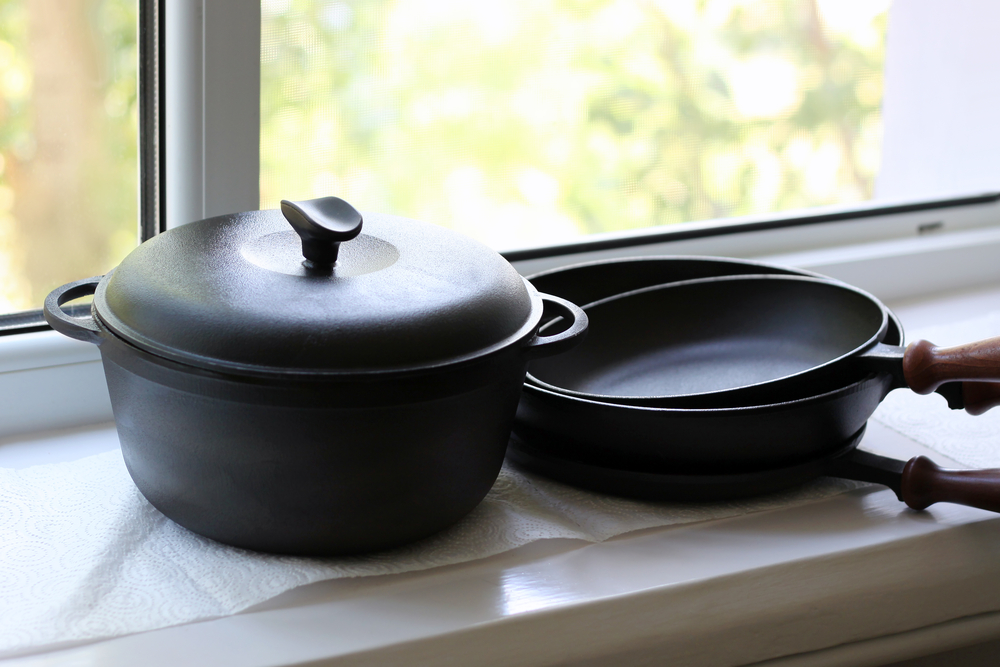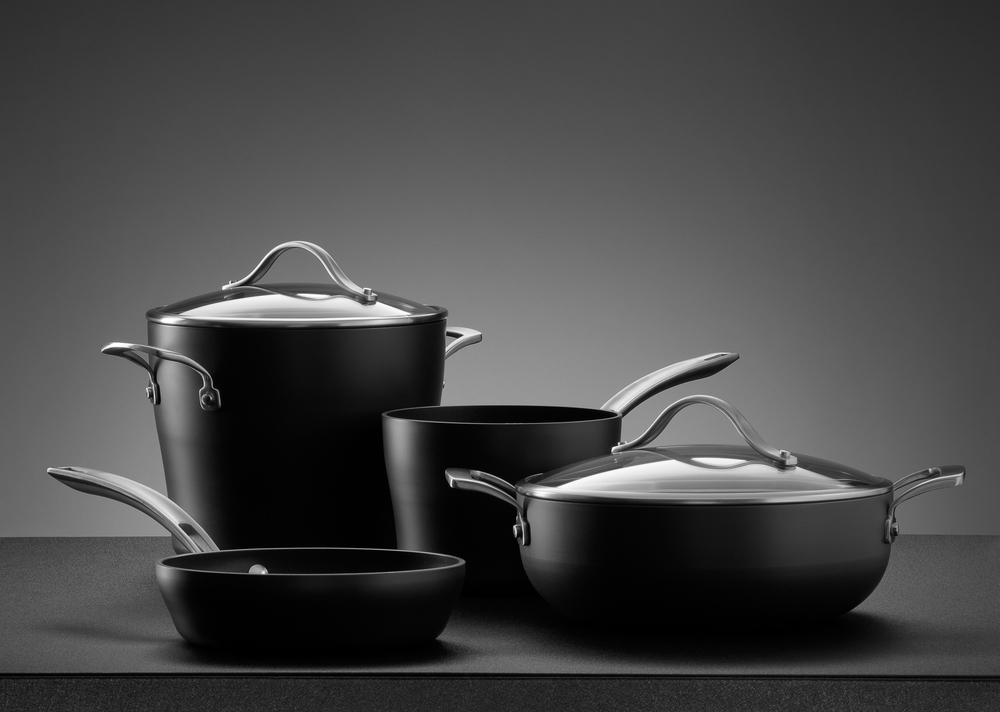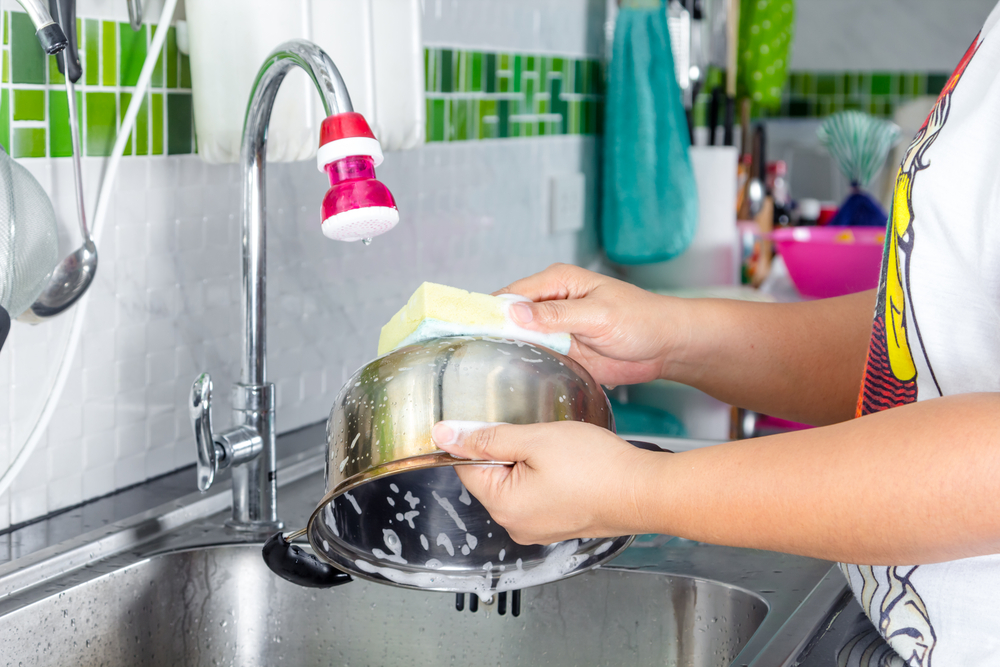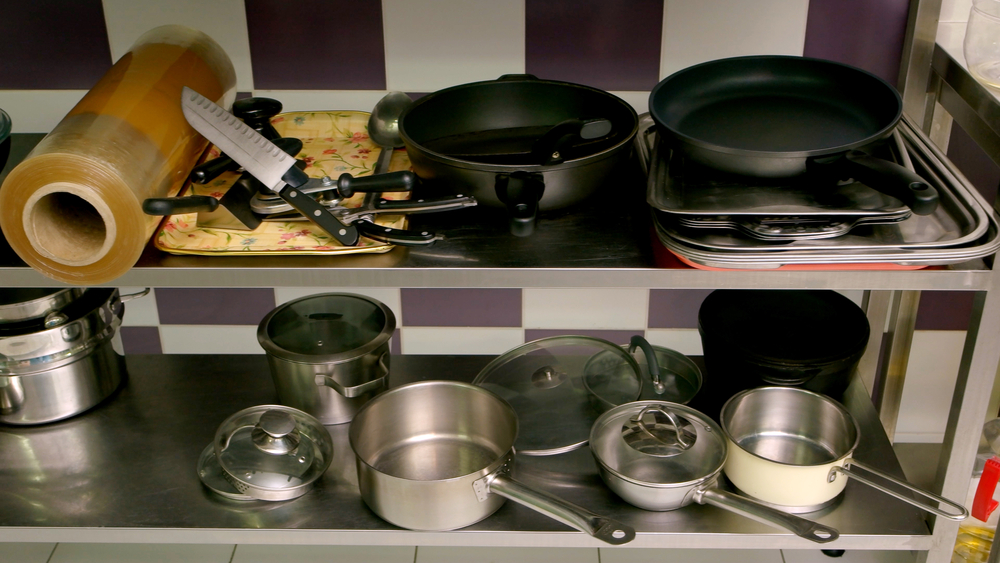I’ve always been fond of ceramic cookware. It’s durable, easy to clean, and looks great in my kitchen. But one question I’ve always had is whether I can use metal utensils on my ceramic pans.
After all, I don’t want to damage them or risk any toxic chemicals leaching into my food.
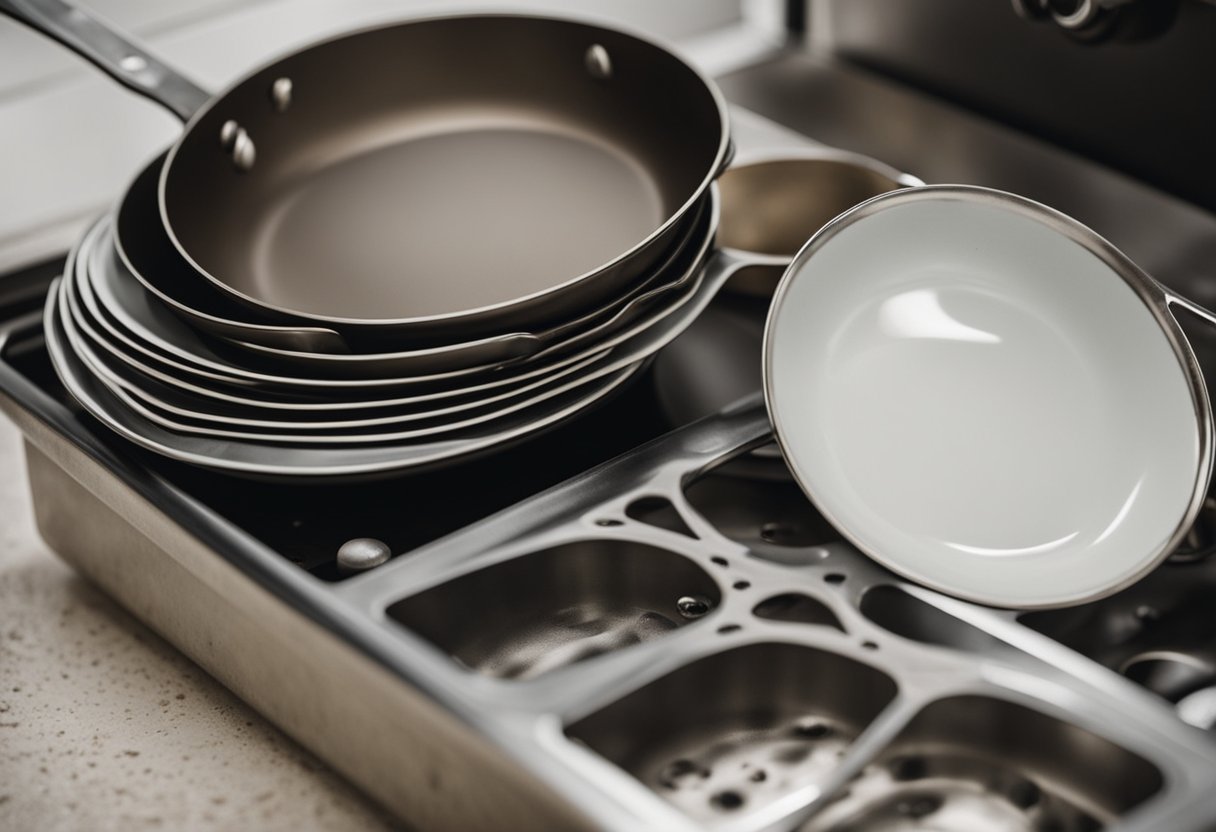
It turns out that the answer is not a simple yes or no. While you technically can use metal utensils on ceramic cookware, it’s not the best idea.
Ceramic can be easily scratched and damaged by metal, especially if it has a ceramic coating over a metal base. So, it’s best to be cautious and use utensils that are less likely to cause damage.
Key Takeaways
- While you can use metal utensils on ceramic cookware, it’s best to use utensils that are less likely to cause damage.
- High temperatures can also impact the durability of ceramic cookware, so it’s important to use the right utensils and avoid overheating.
- Proper care and maintenance can help extend the life of your ceramic cookware and keep it looking great in your kitchen.
Understanding Ceramic Cookware
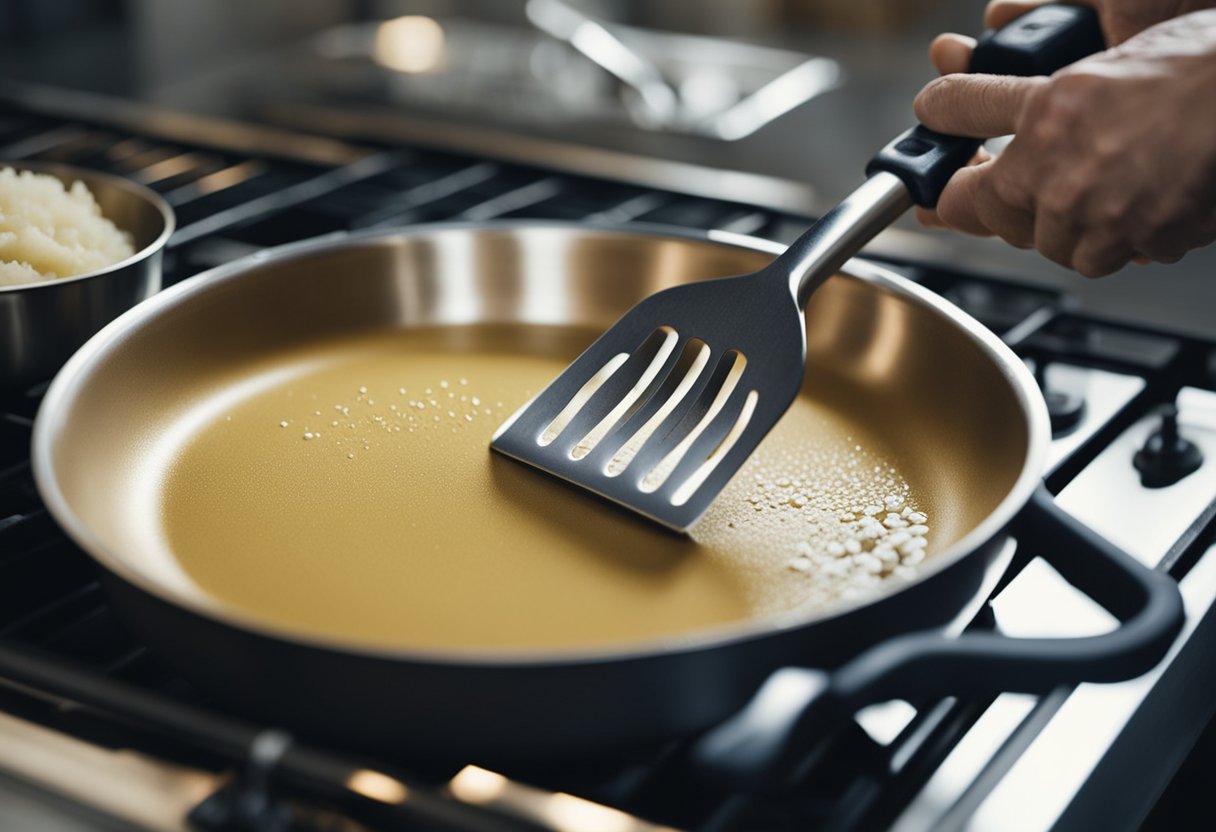
As a cookware material, ceramic is known for its durability, versatility, and non-stick properties. Ceramic cookware is made by coating a metal base with a layer of ceramic material.
This ceramic material can be made using a variety of processes, including sol-gel and lead-free options.
One of the main advantages of ceramic cookware is its non-stick surface. This surface allows food to be cooked with less oil, making it a healthier option.
Additionally, the non-stick surface makes it easier to clean and prevents food from sticking to the pan.
It’s important to note that not all ceramic cookware is non-toxic. Some ceramic pots and pans may contain lead or other harmful chemicals, so it’s important to do your research and choose a brand that is certified as non-toxic.
When it comes to using metal utensils on ceramic cookware, it’s generally not recommended. While ceramic non-stick pans are more durable than traditional non-stick pans, they can still be scratched and damaged by metal utensils.
To prevent damage, it’s best to use soft-edged utensils such as those made from wood, silicone, or plastic.
In conclusion, ceramic cookware is a popular option for its durability, versatility, and non-stick properties.
However, it’s important to choose a non-toxic brand and avoid using metal utensils to prevent damage to the non-stick surface.
Metal Utensils and Ceramic Pans
As someone who enjoys cooking, I often get asked if it is safe to use metal utensils on ceramic pans. The answer is not straightforward, but generally, it is not recommended to use metal utensils on ceramic pans.
Ceramic pans are coated with a layer of ceramic material, which is delicate and prone to scratches. Using metal utensils, such as stainless steel utensils, can scratch the ceramic surface, which can lead to chipping and flaking.
This not only affects the lifespan of the pan but also exposes the metal underneath, which can potentially leach into your food.
Metal spatulas, in particular, are not safe for use on ceramic pans. The sharp edges of the spatula can easily scratch the surface of the pan, causing damage to the ceramic coating.
While some ceramic pans may claim to be safe for use with metal utensils, it is always best to err on the side of caution.
It is better to use utensils made of silicone, nylon, or wood, which are softer and gentler on the ceramic surface.
If you must use metal utensils, it is recommended to use them on cast iron pans instead. Cast iron pans are more durable and can withstand the harshness of metal utensils without getting damaged.
In conclusion, it is generally not safe to use metal utensils on ceramic pans.
While some pans may be marketed as safe for use with metal utensils, it is always best to stick to softer utensils to avoid damaging the delicate ceramic coating.
The Impact of High Temperatures
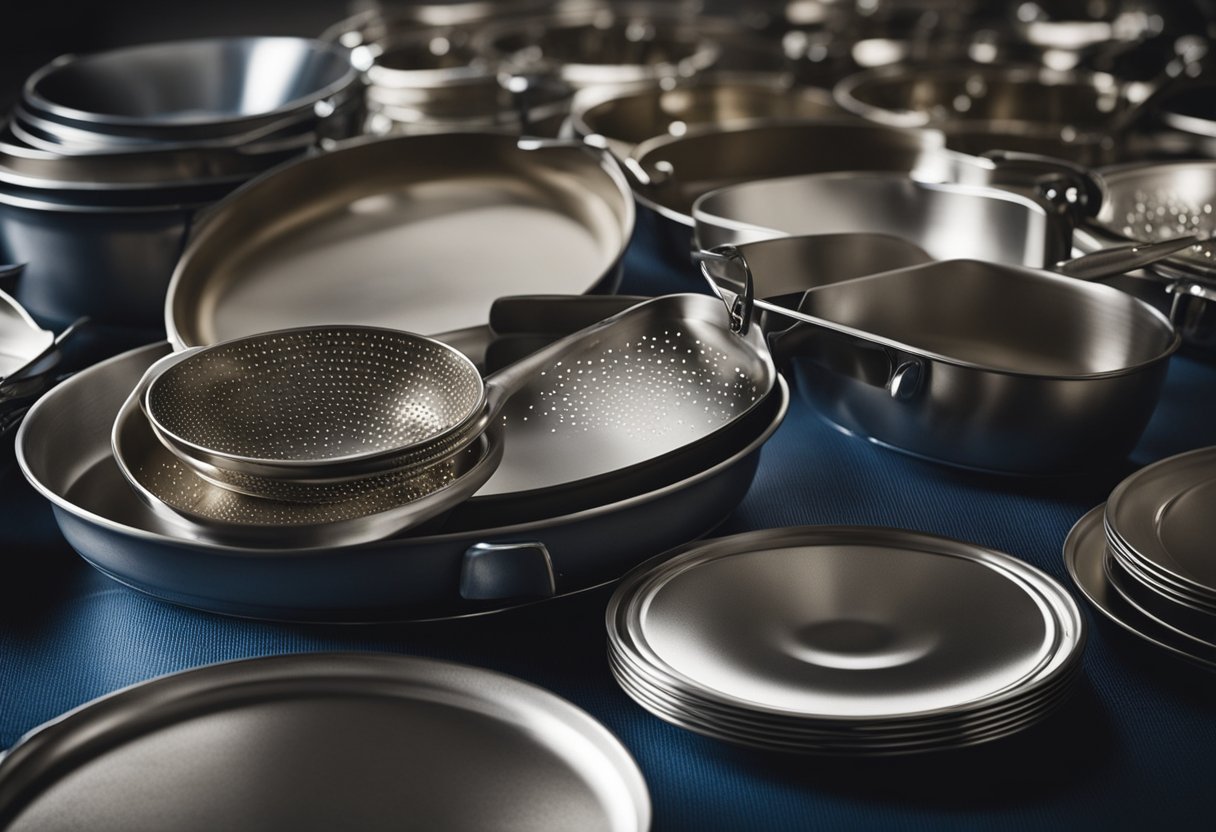
When cooking with ceramic cookware, it’s important to keep in mind that high temperatures can have an impact on the surface of the pan.
Ceramic cookware is not as hardy as stainless steel or cast iron, so it’s important to be mindful of the heat.
Exposing ceramic cookware to high temperatures can cause the surface to stain or discolor. This can be especially noticeable if you’re cooking with oil or butter, which can leave behind residue that can be difficult to remove.
To prevent staining, it’s best to cook with low to medium heat when using ceramic cookware. This will help to ensure that the surface of the pan stays in good condition and doesn’t become discolored.
In addition to staining, high temperatures can also cause damage to the surface of ceramic cookware. Using metal utensils on ceramic cookware can scratch the surface, which can lead to damage over time.
To prevent damage, it’s best to use wooden or plastic utensils when cooking with ceramic cookware.
Overall, it’s important to be mindful of the impact of high temperatures when cooking with ceramic cookware.
By using low to medium heat and gentle utensils, you can help to ensure that your ceramic cookware stays in good condition and lasts for years to come.
Comparison With Other Cookware
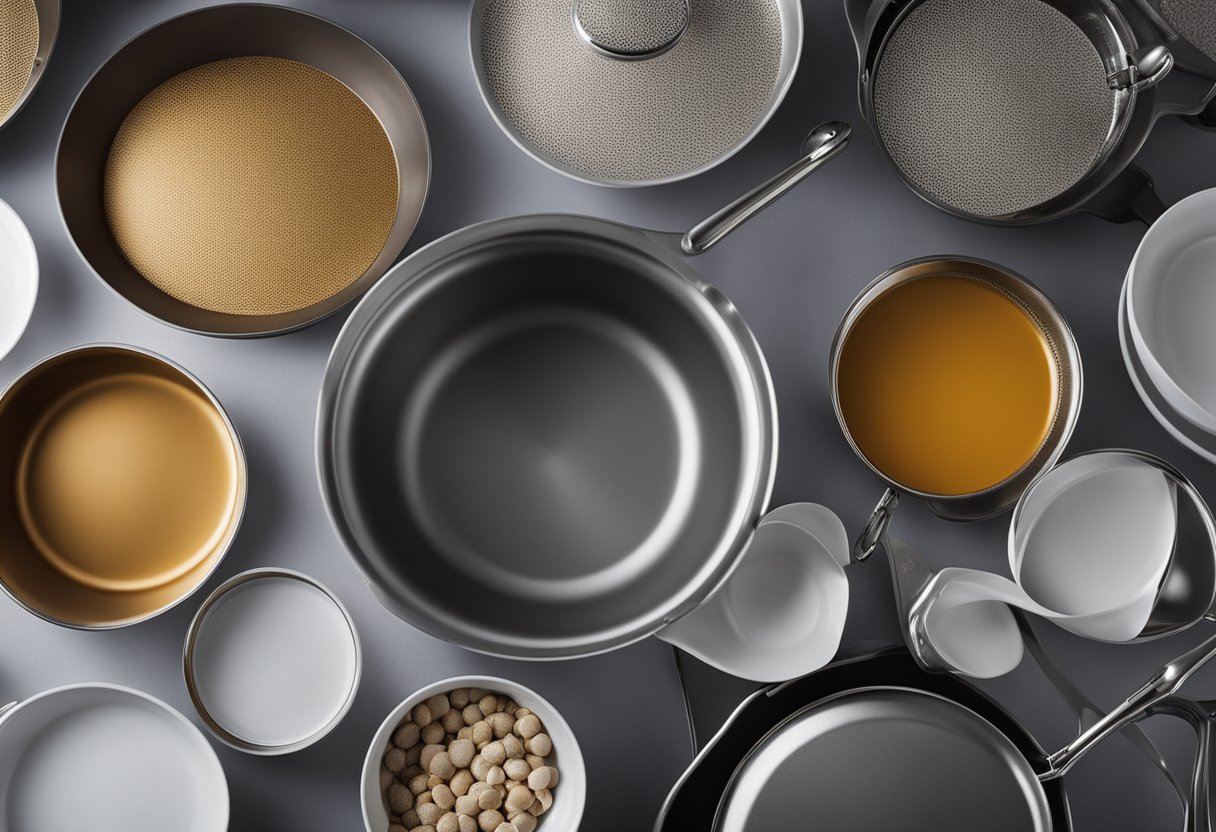
When it comes to choosing cookware, there are many options available on the market. Each type of cookware has its own advantages and disadvantages.
In this section, I will compare ceramic cookware with other popular types of cookware.
Stainless Steel
Stainless steel cookware is known for its durability and resistance to corrosion. It is also non-reactive, which means it won’t react with acidic foods.
However, stainless steel is not a good conductor of heat, so it can take longer to heat up and cook food evenly.
Cast Iron
Cast iron cookware is known for its ability to retain heat and distribute it evenly. It is also very durable and can last for generations.
However, cast iron is heavy and can be difficult to handle, especially when it’s hot. It also requires seasoning to prevent rusting.
Aluminum
Aluminum cookware is lightweight and conducts heat well, making it a popular choice for many cooks.
However, it can react with acidic foods and cause discoloration and a metallic taste. It is also prone to scratches and dents.
Copper
Copper cookware is an excellent conductor of heat and provides even cooking. It is also very attractive and adds a touch of elegance to any kitchen.
However, copper is expensive and requires regular polishing to maintain its shine.
Porcelain Cookware
Porcelain cookware is known for its non-reactive surface, which makes it a good choice for acidic foods. It is also easy to clean and comes in a variety of colors and patterns.
However, porcelain can chip or crack if dropped or mishandled.
Teflon-Coated Pans
Teflon-coated pans are nonstick, which makes them ideal for cooking foods that tend to stick. They are also easy to clean and require little to no oil or butter.
However, Teflon can scratch and peel over time, which can be dangerous if ingested.
Nonstick Cookware
Nonstick cookware is similar to Teflon-coated pans, but it can be made from a variety of materials. It is also easy to clean and requires little to no oil or butter.
However, nonstick cookware can scratch and peel over time, which can be dangerous if ingested.
In conclusion, ceramic cookware has its own unique advantages and disadvantages compared to other types of cookware.
It is important to consider your cooking needs and preferences before making a decision on which type of cookware to use.
Alternative Utensil Options

When it comes to cooking with ceramic cookware, it is best to avoid using metal utensils as they can scratch and damage the surface of the cookware.
However, there are many alternative utensil options that are safe to use with ceramic pans. In this section, I will discuss some of the most popular alternative utensil options.
Silicone Utensils
Silicone utensils are a popular choice for cooking with ceramic cookware. They are heat-resistant and won’t scratch the surface of the cookware.
Silicone cooking utensils come in a variety of shapes and sizes, including spatulas, spoons, and whisks. They are also easy to clean and dishwasher safe.
Wooden Utensils
Wooden utensils are another great option for cooking with ceramic cookware. They are gentle on the surface of the cookware and won’t scratch or damage it.
Wooden utensils are also heat-resistant and come in a variety of shapes and sizes. They are easy to clean and can be washed by hand or in the dishwasher.
Nylon Utensils
Nylon utensils are a popular choice for cooking with ceramic cookware. They are gentle on the surface of the cookware and won’t scratch or damage it.
Nylon utensils are also heat-resistant and come in a variety of shapes and sizes. They are easy to clean and can be washed by hand or in the dishwasher.
Silicone Cooking Utensils
Silicone cooking utensils are another great option for cooking with ceramic cookware. They are heat-resistant and won’t scratch the surface of the cookware.
Silicone cooking utensils come in a variety of shapes and sizes, including spatulas, spoons, and whisks. They are also easy to clean and dishwasher safe.
Kitchen Utensils
There are many different types of kitchen utensils that are safe to use with ceramic cookware. Some popular options include tongs, ladles, and slotted spoons.
When choosing kitchen utensils for ceramic cookware, it is important to look for utensils that are gentle on the surface of the cookware and won’t scratch or damage it.
In conclusion, there are many alternative utensil options that are safe to use with ceramic cookware. Silicone utensils, wooden utensils, nylon utensils, silicone cooking utensils, and kitchen utensils are all great options to consider.
When choosing utensils for ceramic cookware, it is important to look for utensils that are gentle on the surface of the cookware and won’t scratch or damage it.
Maintaining Durability and Longevity

As I mentioned earlier, ceramic pans can be sensitive to scratches and damages. To maintain the longevity and durability of your ceramic pans, it is important to follow some basic guidelines.
Firstly, avoid using metal utensils on your ceramic pans. While some sources say it is safe to use metal utensils on ceramic cookware, it is best to err on the side of caution.
Metal utensils can cause scratches and damage to the ceramic coating, reducing the non-stick properties of the pan and shortening its lifespan. Instead, opt for silicone, plastic, or wooden utensils.
Secondly, avoid using abrasive scrubbers or harsh chemicals to clean your ceramic pans. These can also cause scratches and damage to the ceramic coating.
Instead, use a soft sponge or cloth with mild soap and warm water to clean your pans. If there are stubborn stains or burnt-on food, soak the pan in warm water and dish soap for a few hours before cleaning.
Thirdly, store your ceramic pans carefully. Avoid stacking them on top of each other or with other heavy cookware.
This can cause scratches and damage to the ceramic coating. Instead, store your ceramic pans separately, either hanging them or placing them in a single layer in a drawer or cabinet.
Finally, consider investing in high-quality ceramic pans. While they may be more expensive than traditional non-stick pans, they can last for up to three years with proper care.
Some high-quality ceramic pans also come with a stainless steel base, which can provide additional durability and longevity.
By following these guidelines, you can ensure that your ceramic pans remain in top condition for years to come.
Cleaning and Care for Ceramic Pans
As someone who frequently uses ceramic pans, I know that proper cleaning and care is essential for maintaining their quality. Here are some tips to keep your ceramic pans in top condition.
Hand Washing
Ceramic pans are typically not dishwasher safe, so it’s important to hand wash them. Rinse the pan with warm water and use a nonabrasive sponge to gently scrub off any food residue.
Avoid using steel wool or abrasive cleaners, as these can scratch the surface of the pan.
Soaking
If your ceramic pan has stubborn stains or burnt-on food, soaking it in warm water can help loosen the grime. Add a tablespoon of baking soda to the water for an extra boost.
Let the pan soak for at least 30 minutes before washing.
Air-Drying
After washing your ceramic pan, be sure to let it air-dry completely before stacking it with other pans. Stacking wet pans can lead to scratches and damage to the ceramic coating.
Cool Down
When you’re finished cooking with your ceramic pan, let it cool down before washing it. Placing a hot pan in cold water can cause the ceramic to crack or warp.
Overall, ceramic pans are easy to clean and maintain with proper care.
By hand washing, soaking, air-drying, and allowing the pan to cool down before washing, you can keep your ceramic pans looking and performing their best for years to come.
Avoiding Toxic Chemicals
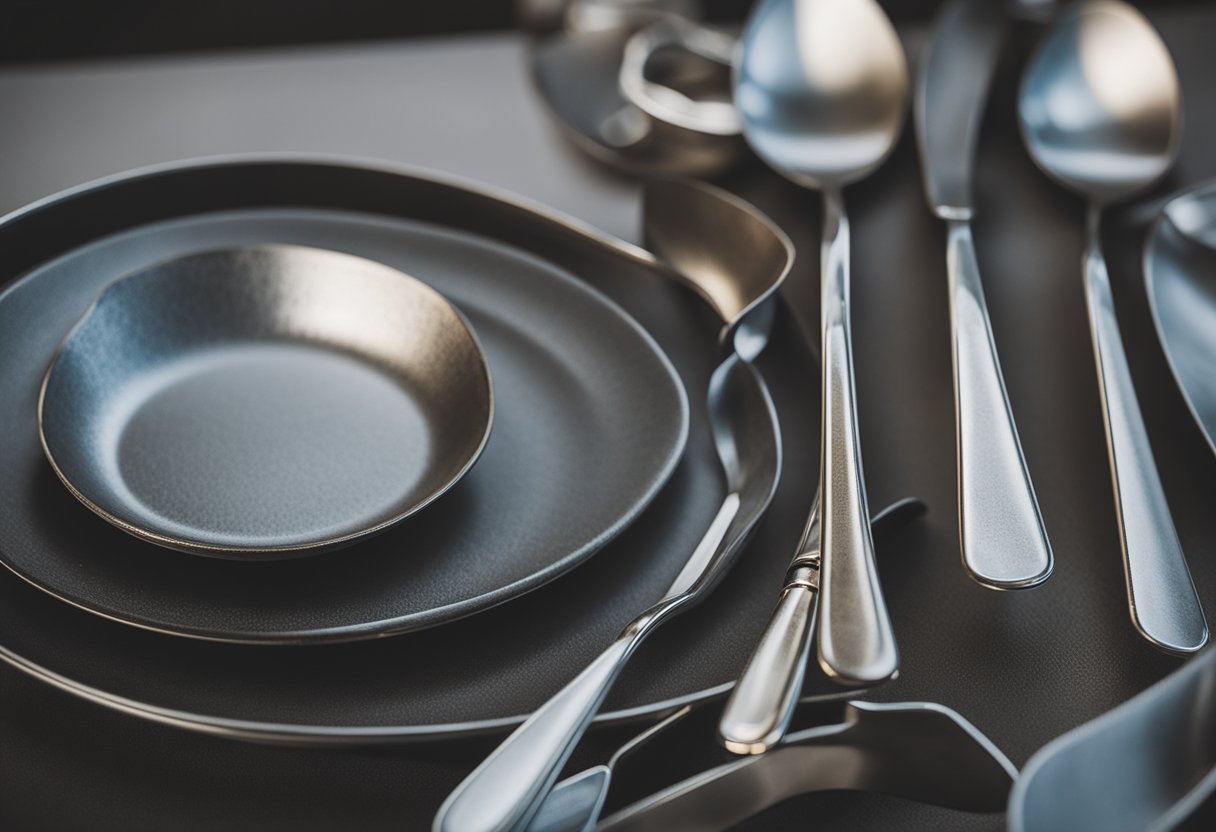
As I researched how to care for my ceramic pans, I discovered that some types of cookware can contain toxic chemicals such as perfluorooctanoic acid (PFOA) and polytetrafluoroethylene (PTFE).
These chemicals are often found in non-stick coatings, which can be harmful to our health when ingested.
To avoid toxic chemicals in my cookware, I made sure to choose ceramic pans that are PFOA and PTFE-free.
I also researched the brands and manufacturers of the ceramic pans I was interested in to ensure they met strict FDA requirements for lead and cadmium levels.
In addition to choosing safe cookware, I also made sure to use safe utensils when cooking with my ceramic pans.
Metal utensils can scratch the surface of the pan, which can cause the non-stick coating to break down and release toxic chemicals into my food.
Instead, I opted for silicone, nylon, or wooden utensils to protect the surface of my ceramic pans.
I also made sure to avoid cutting food directly in the pan with a knife, as this can cause metal utensils to come into contact with the surface of the pan.
Instead, I transferred the food to a serving tray before cutting it with a knife.
Overall, by choosing safe ceramic pans and using safe utensils, I can enjoy cooking without worrying about harmful chemicals leaching into my food.
Seasoning Ceramic Pans
As a professional chef, I’ve learned that seasoning a ceramic pan is essential for maintaining its non-stick surface and extending its lifespan.
Ceramic pans are made of a porous material, which means they require seasoning to fill in the microscopic pores and create a smooth surface that prevents food from sticking.
To season a ceramic pan, you’ll need to follow a few simple steps. First, wash your pan with warm water and soap to remove any dirt or debris. Dry the pan thoroughly with a soft cloth or paper towel.
Next, add a small amount of cooking oil to the pan. While vegetable oil is the best for creating a non-stick surface for your ceramic pan, you can use most oils such as peanut oil, grapeseed oil, lard, or canola oil.
Spread the oil around the pan using a paper towel or soft cloth, making sure to cover the entire surface, including the sides.
Preheat your oven to 350°F (180°C) and place the greased ceramic pan in the oven, preferably on the center rack. Heat the pan for about an hour.
However, regardless of how long it’s been in the oven, remove it immediately if smoke begins to come out of the pan.
Once the pan has cooled down, wipe off any excess oil with a paper towel or soft cloth. Your ceramic pan is now ready to use.
Repeat this process every few months or as needed to maintain the non-stick surface of your ceramic pan.
It’s important to note that seasoning a ceramic pan is not a one-time process. You’ll need to repeat it regularly to keep your pan in good condition.
Also, avoid using sharp metal utensils or abrasive cleaners that can damage the protective layer on the pan’s surface. Use wooden or silicone utensils instead.
In conclusion, seasoning a ceramic pan is a simple but essential process for maintaining its non-stick surface and extending its lifespan.
By following these steps, you can ensure that your ceramic pan stays in top condition and provides you with many years of use.
Frequently Asked Questions
What type of utensils are safe to use with ceramic pans?
When it comes to ceramic pans, it’s best to use utensils that are made of softer materials such as silicone, wood, or nylon. These materials are less likely to scratch or damage the ceramic surface of the pan.
Can metal utensils scratch or damage ceramic pans?
Yes, metal utensils can scratch and damage ceramic pans. Ceramic is a softer material than metal, so using metal utensils can lead to scratches and other damage over time.
What are the best utensils to use with ceramic cookware?
The best utensils to use with ceramic cookware are those made of softer materials such as silicone, wood, or nylon. These materials are less likely to scratch or damage the ceramic surface of the cookware.
Is it safe to use metal utensils on ceramic non-stick pans?
It is generally not recommended to use metal utensils on ceramic non-stick pans. The non-stick coating on these pans is more delicate than the ceramic itself, and using metal utensils can scratch and damage the coating.
Can ceramic pans be used for frying?
Yes, ceramic pans can be used for frying. Ceramic is a great material for frying because it distributes heat evenly and can handle high temperatures.
What should you avoid putting on ceramic pans to prevent damage?
To prevent damage to ceramic pans, it’s best to avoid using metal utensils, abrasive sponges, or harsh cleaning chemicals. Instead, use softer utensils, a gentle sponge, and a mild dish soap to clean your ceramic pans.



